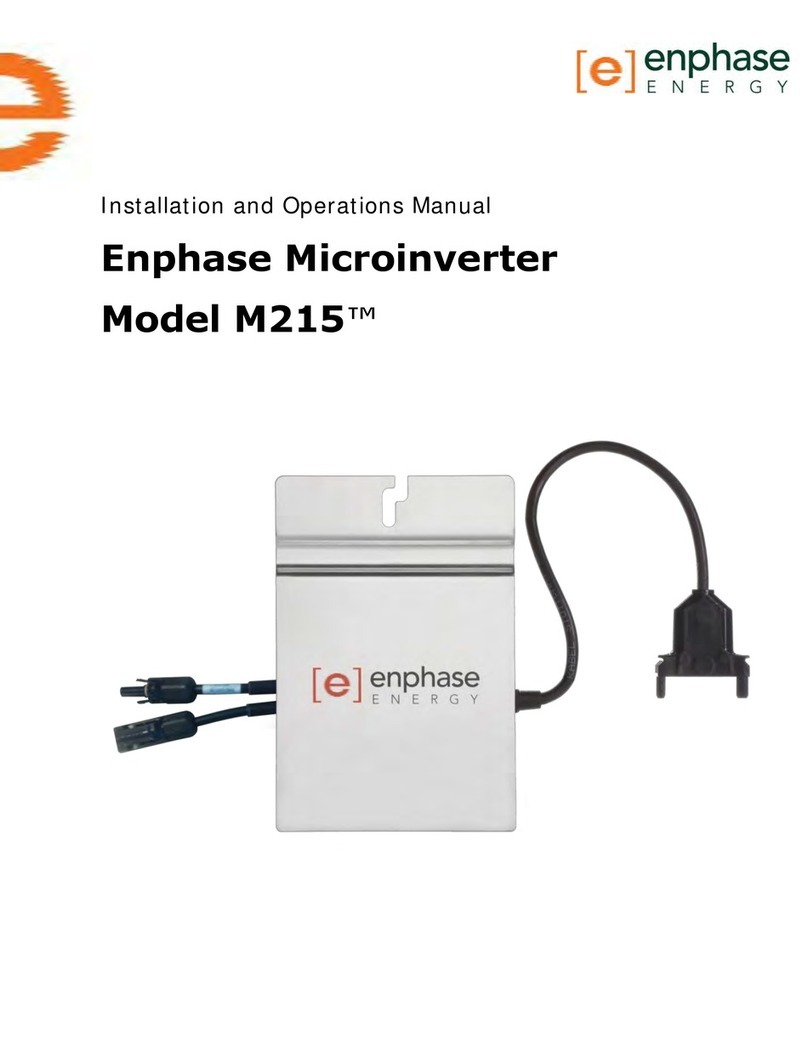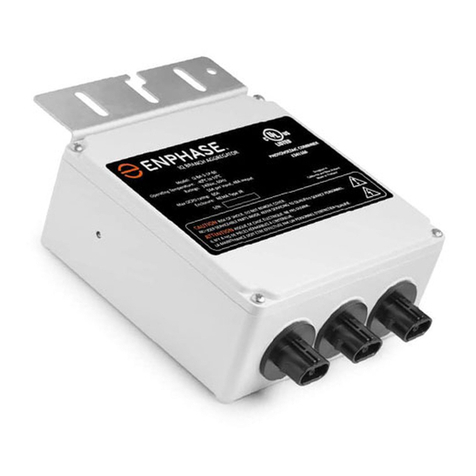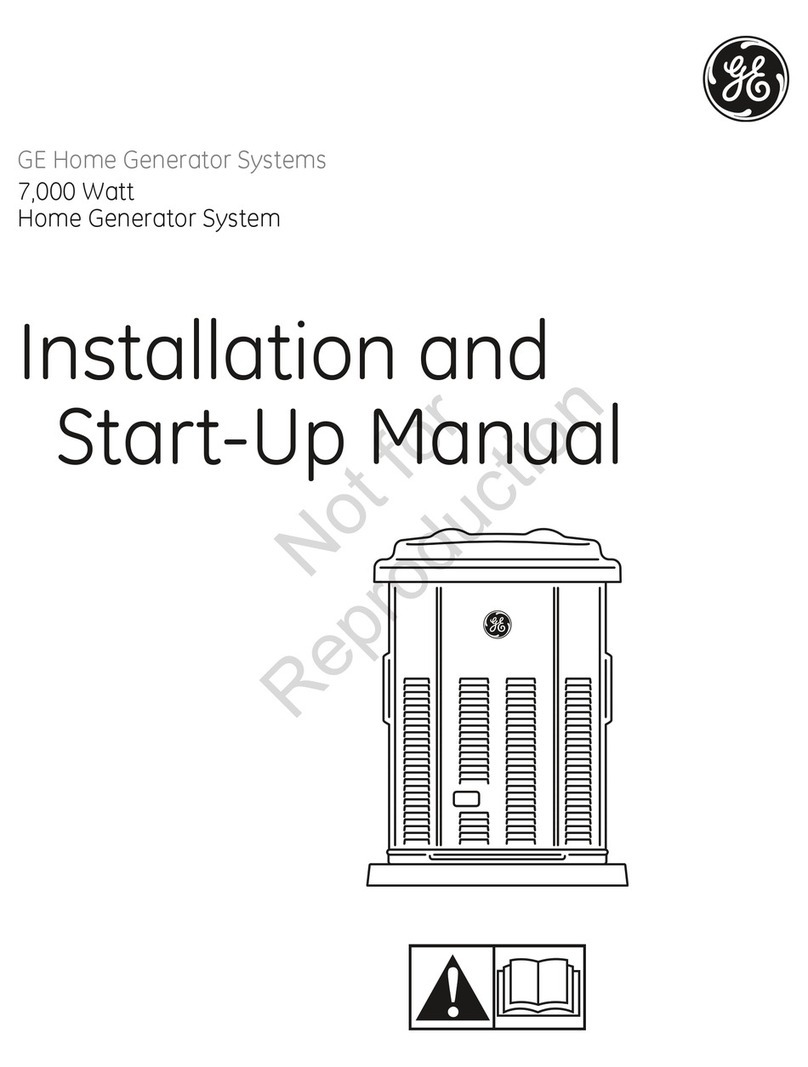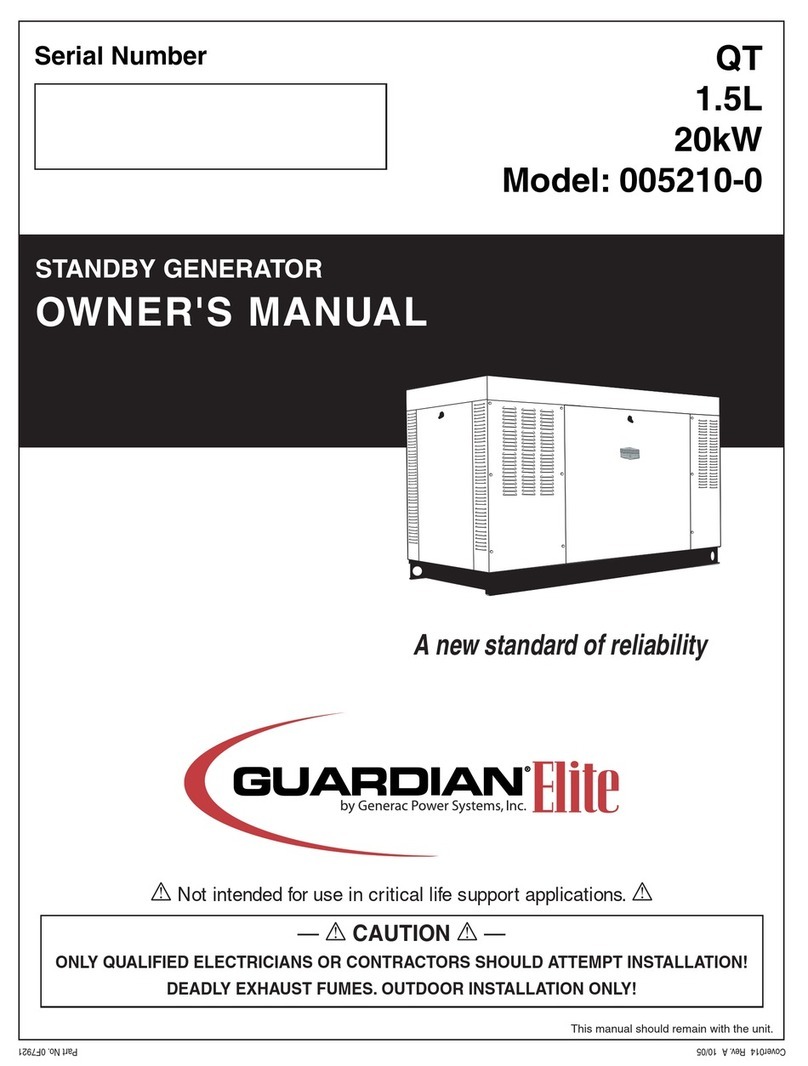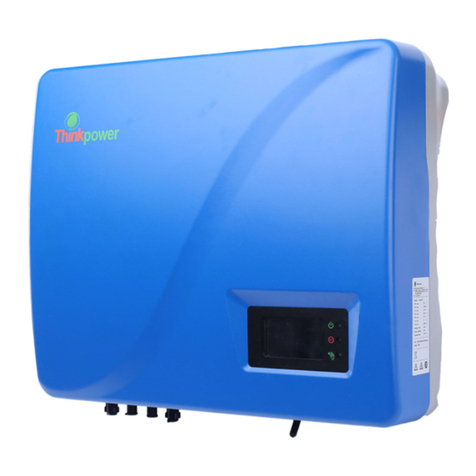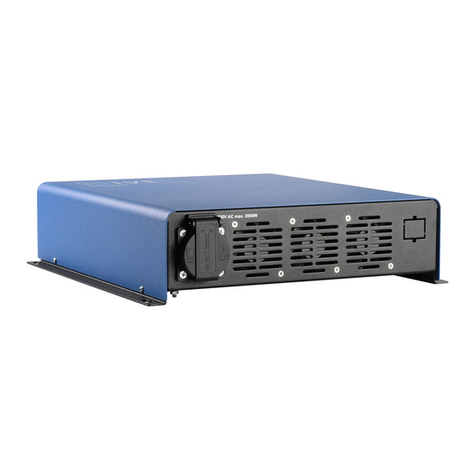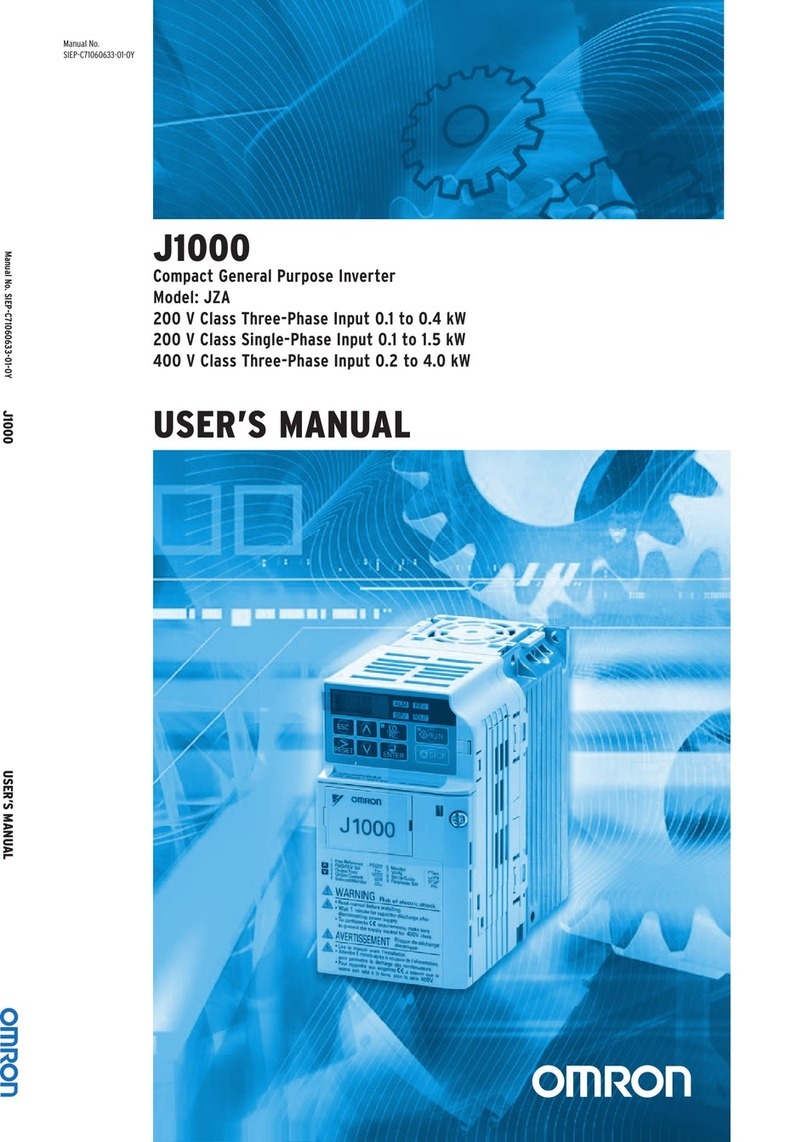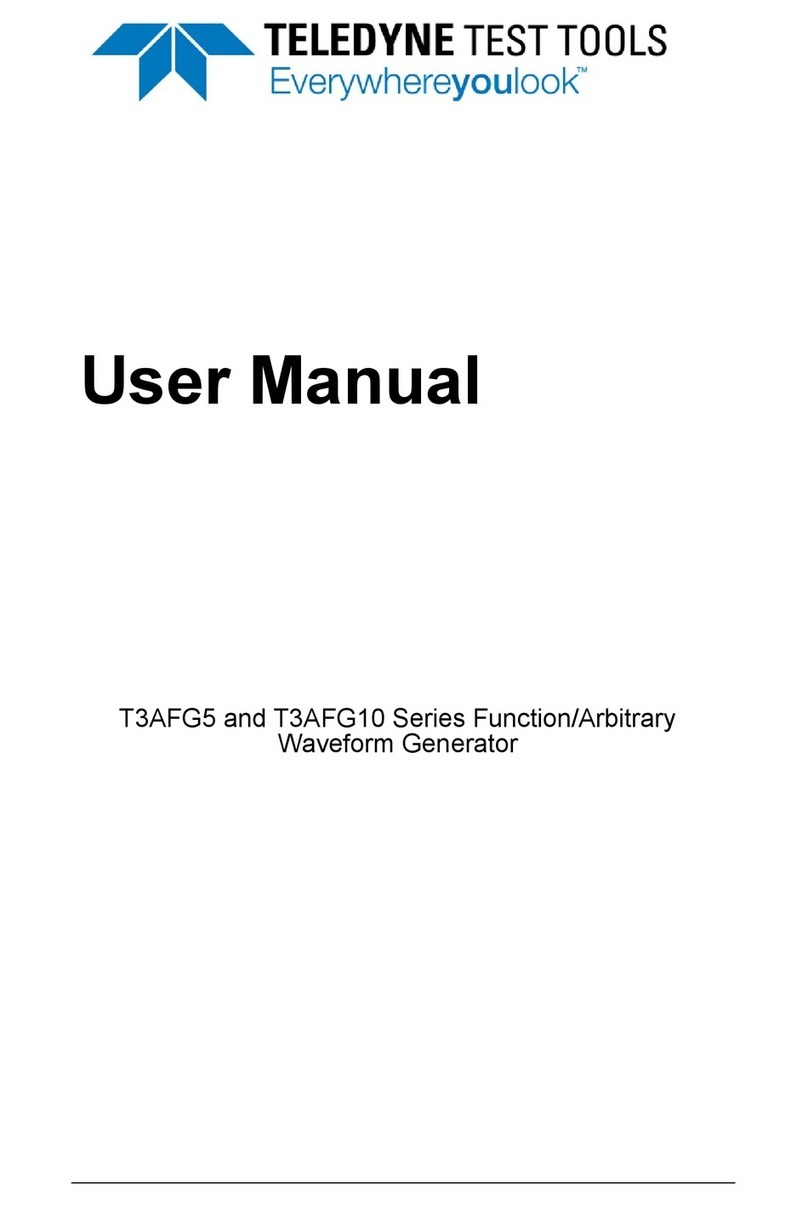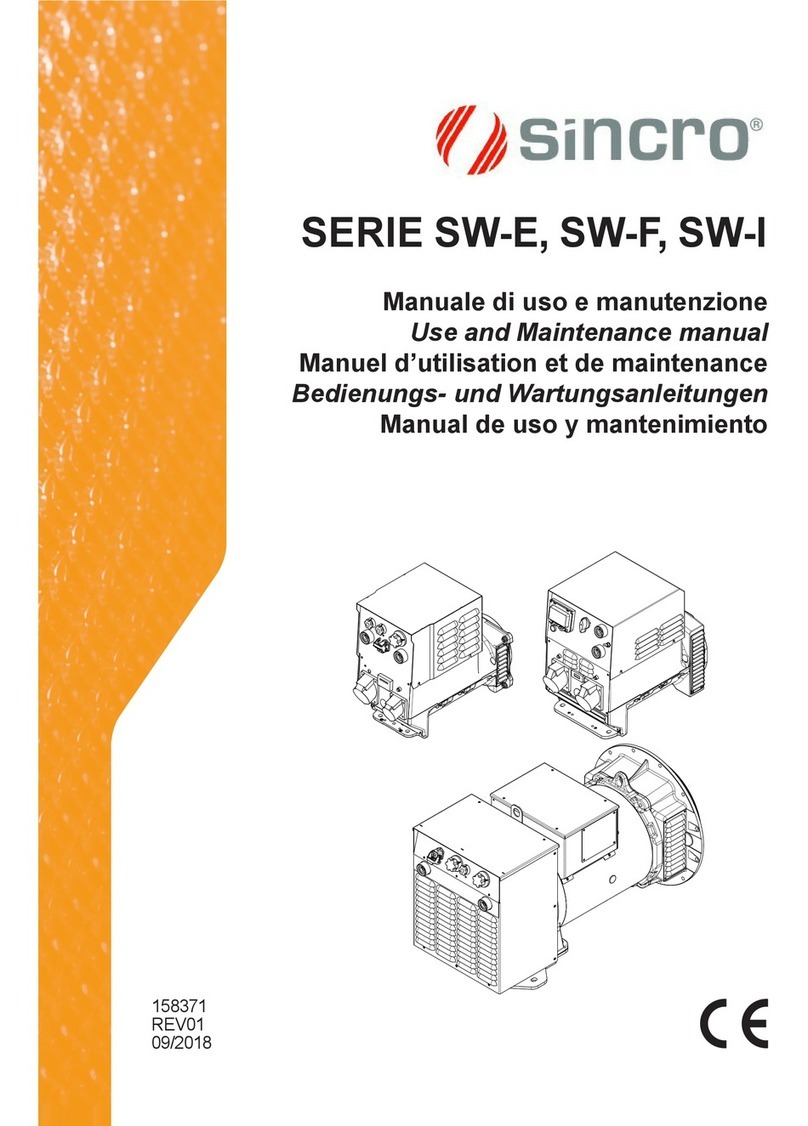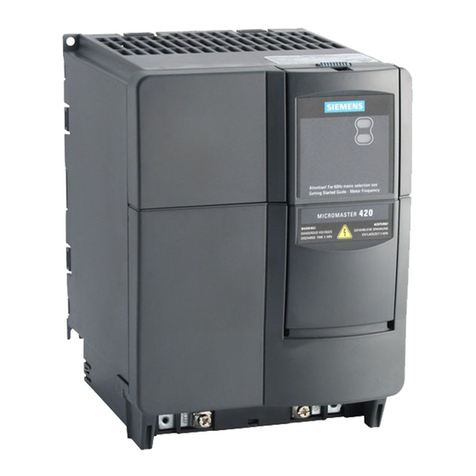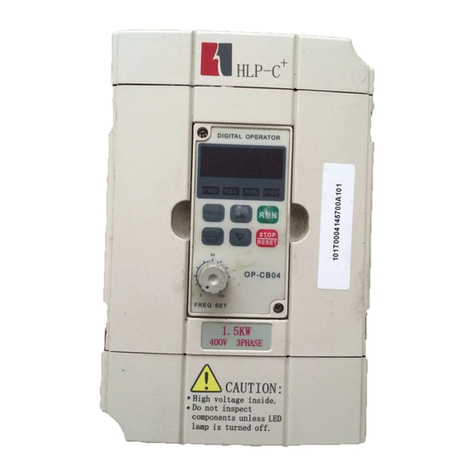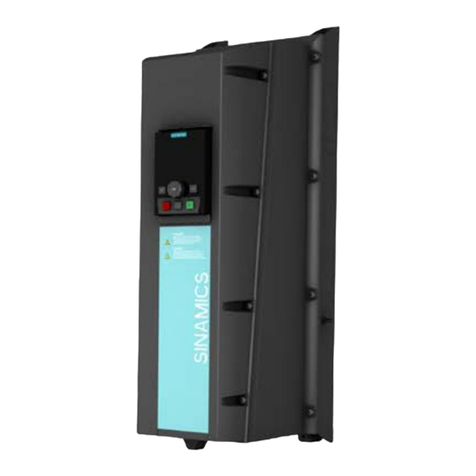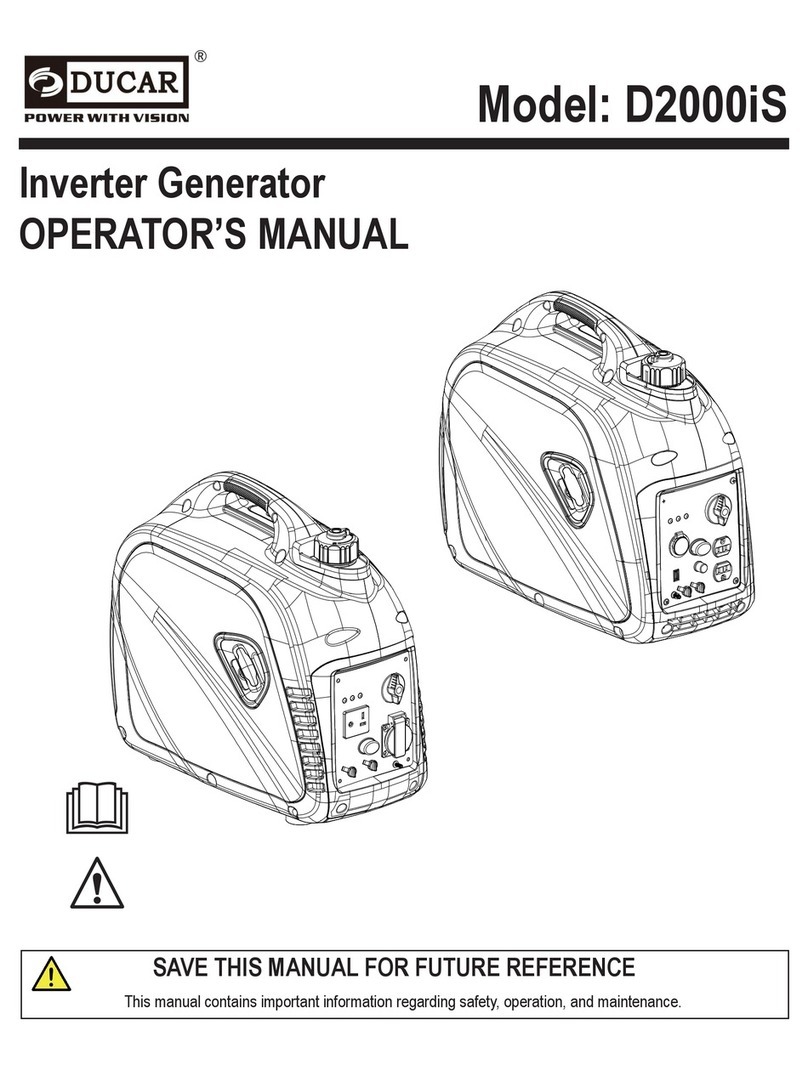enphase Microinverter System User manual

Reference Manual
Troubleshooting an
Enphase Microinverter System

Contents
Enlighten Messages and Alerts 4
ACFOOR (AC Frequency Out of Range) 4
ACVOOR (AC Voltage Out of Range) 5
Critical Temperature 7
DC Too Low 8
DC Too High 8
Envoy/EMU not Reporting 9
Gateway Failure 9
GFDI / GFI trip 9
Grid Gone 10
Module Failed to Report 11
Over Temperature 11
Zigbee Device Failed to Report 11
Zigbee USB Stick Removed 11
ENVOY and Communications Issues 12
General Envoy Issues 12
A physical Ethernet connection is not practical at this site 12
LCD is completely blank 12
LCD displays “Reset Clock”12
LCD displays “Envoy Failure” 12
Internet Problems (Local Area Networking) 13
LCD shows a non-routable/self-assigned IP address and also shows “-Web” 13
LCD periodically shows “-Web” for minutes or hours at a time. 14
LCD shows a good IP, but also shows “-Web” 15
The DSL modem at the site has only one Ethernet port, and it is being used 15
The Envoy cannot get a “+Web” even though all premises networking is intact 15
Internet service is not available on site 15
Can I use a dial up Internet connection with the Envoy? 16
Are My Power Line Communication Bridges Working? 16
The Envoy is using a static IP and cannot get a web connection 17

Communication Issues between Envoy & Microinverters (Power Line Communication) 17
Inverters are not detected / Power line communication level is low/poor 18
How to identify an interfering load 20
This is a Line-side Tap (or Supply-Side, or PLC) Installation 21
When do I need an additional Envoy? 22
How to get further training on Enphase power line communication 22
Microinverter / PV Module Issues 23
Microinverter LEDs and What they Mean 23
The Microinverter LEDs are blinking red 23
The Microinverter LEDs are blinking orange 24
The Microinverter LEDs are not lit 24
Power Production 25
The unit under review shows low production. 25
Why is one unit showing 0W production when adjacent units are productive? 25
My panels are dark in Enlighten and no production value is displayed 28
Enlighten will not allow me to select the panel 28
I would like to see my panel’s production history 28
Run a report to view production history 28
Use the Graph widget to view production history 29
There is an event or alert message on the system 29

4 Copyright © Enphase Energy, Inc. 2011 06/15/2011
Troubleshooting An Enphase Installation
This document describes trouble-shooting ows and procedures only. For product and instal-
lation information, refer to http://www.enphase.com/support/downloads.
Troubleshooting areas covered in this document include:
Enlighten Messages and Alerts
ENVOY and Communications Issues
Microinverter / PV Module Issues
Enlighten Messages and
Alerts
The following event messages may appear
in Enlighten or in the Envoy interface. If you
have received an Enlighten alert in email,
read the email through. It includes informa-
tion on whether or not action is required and
what that action should be.
ACFOOR (AC Frequency Out of Range)
The inverter reports that the frequency coming from the utility is
either too low or too high as specied by UL standards (UL1741).
The nominal frequency range for M190, M210 and D380 microin-
verters is 59.3 to 60.5; typical is 60.0.
Frequency out of range events are usually transient and indicate
an anomaly from the utility; usually this is self-correcting by the
utility. If the condition persists, troubleshoot as follows.
These events can happen because of an actual frequency out-
of-spec condition, but more likely, they trip because of either a
poorly shaped AC waveform or excessive THD (Total Harmonic
Distortion) emanating from the utility service. This type of er-
ror rarely affects just one unit, and is usually indicative of an AC
service issue.
Along with ACFOOR events, Grid Gone events may also be occur-
ring. This is an indication of Anti-Islanding, which sometimes
goes hand-in-hand with ACVOOR (AC Voltage Out of Range) and
ACFOOR.
What does “Anti-
Islanding” mean?
“Anti-islanding” is pro-
tection against the con-
tinuous operation of the
inverter and part of the
utility load while isolated
from the remainder of the
electric utility system.
This means that if power
from the utility is discon-
nected, the utility-inter-
active inverter will stop
exporting power within
two seconds. This is to
protect utility line workers
and loads.

5 Copyright © Enphase Energy, Inc. 2011 06/15/2011
ACVOOR (AC Voltage Out of Range)
The inverter reports that the AC voltage coming from the utility is either too low or too high
as specied by UL standards (UL1741).
Acceptable ranges for AC service are shown in the table below:
240 Volt AC Split Phase 208 Volt AC Three Phase
L1 to L2 211 to 264 Vac L1 to L2 to L3 183 to 229 Vac
L1, L2 to neutral 106 to 132 Vac L1, L2, L3 to neutral 106 to 132 Vac
This condition should correct itself, as there are often periodic variations in Utility voltage. If
the condition persists, troubleshoot as follows.
When an entire branch or multiple branches are impacted
Things to check:
1. Measure voltages for L-L and L-N for all phase-conductors at the service entrance (PCC),
at each Enphase branch circuit breaker, at each Enphase branch circuit junction box, at
each Enphase branch circuit AC pigtail (if used in this installation), and at the last micro-
inverter of each Enphase branch circuit.
2. Verify that the AC pigtail or cabling to the junction box is correctly terminated per wire
color. (See the installation manual for the microinverter being used.)
3. Verify that the correct circuit breaker has been used. (Is the amperage rating correct?
Are the number of termination poles correct?)
• If the breaker is undersized, the branch may experience nuisance tripping at peak
production times.
• If the breaker is oversized, the branch may have been damaged with too much
current ow through the microinverters.

6 Copyright © Enphase Energy, Inc. 2011 06/15/2011
4. Verify that the service entrance power is not coming from a 240 Vac “DELTA” or 240 Vac
“STINGER” secondary transformer.
5. Make sure that the site does not have undersized conductors, either to the Enphase
branch circuit or between the primary load center and the subpanel (if a subpanel exists).
• In the case where the array branch circuits land on a PV subpanel, and there is ad-
ditional wire run back to the main service tie-in, additional voltage drop calculations
must be completed. A typical voltage drop limit is 3% for AC branch circuits; however,
this is not adequate for utility-interactive inverters. Enphase recommends a voltage
drop of less than 1.5 volts or 0.6 percent.
• For more information, refer to our Application Note “Voltage Drop Calculations: http://
www.enphase.com/support/downloads.
When only a few microinverters are impacted
1. If the condition alternates among microinverters, incorrect cabling may be in use. The
following Enlighten snapshot shows the result of using 208 Volt cabling at a site with 240
Volt service. Notice that only every third unit is productive.
2. If there is only one unit affected by the ACVOOR, and the condition persists with consis-
tent, out of spec readings, the problem is likely with the microinverter, and it may need
to be replaced.
3. If there are multiple units consistently affected by ACVOOR events, this is most likely
caused by an installation/wiring error during installation.
• If the affected units are contiguous or if an entire branch is affected, there is probably
an On/Off switch, or a homemade AC combiner, or an incompatible AC disconnect in-
between the circuit breaker and the AC pigtail of the PCU branch circuit. Or, it may be
faulty wiring, terminations, or circuit breakers only for those affected Enphase branch
circuits. Sometimes something as simple as a wire terminated on a circuit breaker
that is not screwed down tightly will cause ACVOOR on a given branch circuit.
• It may be that an AC pigtail is defective, or that it’s AC connector (or one of the
microinverters on the branch’s AC connector) is damaged or defective. If, for example,

7 Copyright © Enphase Energy, Inc. 2011 06/15/2011
on a branch circuit the rst three units are ne, but the remaining 8 or 9 units on the
branch are in a state of ACVOOR, there is something wrong either at location #3 or
#4 in the branch circuit, affecting the AC Voltage from that point and on downstream
into the branch circuit.
• If the ACVOOR is not an installation or wiring defect, and there are multiple units im-
pacted on an intermittent basis, it may be that the site’s utility service is simply high.
One of the following may be causing this on the utility side:
- The utility transformer bringing service to the site is damaged or defective.
- The utility is purposely pushing the higher AC voltage into some areas during
times of peak demand.
- The homerun conductors from the Enphase branch circuits to their respective
circuit breakers are undersized. For more information, refer to the Application
Note on Voltage Drop Calculations: http://www.enphase.com/downloads
- Is the site using a step-up transformer in-between the primary load-center
and the Enphase branch circuits? If so, this can create ACVOOR conditions.
• If all of the above have been checked and veried, and ACVOOR nuisance tripping is
still occurring, and neither the installer nor the utility can mitigate, Enphase can up-
grade all of the microinverters to a parameter table which allows for slightly expanded
trip-points, while still remaining within spec.
Critical Temperature
This rare condition occurs if the inverter reports an internal temperature that exceeds it
rated range. It reacts by producing less power to reduce internal temperature. Once the
internal temperature of the inverter diminishes, the microinverter resumes full power
production and the error message will clear. No action is required unless the condition
persists. If it persists, contact Enphase Energy customer support.
This reects internal temperature coming from a sensor inside the microinverter, not the
ambient temperature. For more information, see the Enphase Technical Brief on tempera-
ture: http://www.enphase.com/downloads

8 Copyright © Enphase Energy, Inc. 2011 06/15/2011
DC Too Low
The inverter reports that DC input voltage from the PV module is too low. This is a normal
condition that occurs in the morning and in the evening, but during the day may results
from any of the following conditions:
• This message can appear during extended periods of low solar irradiance (for example, a
period that includes the night hours plus a few hours of low sunlight after sunrise).
• This event may indicate a bad or missing DC connection to the inverter. If this condition
occurs during daylight hours, we recommend that a qualied electrician inspect the DC
connection between the module and the inverter. The connection may need to be tight-
ened or may be experiencing wear and tear and require replacement.
• If the microinverter is having DC Too Low events during daylight hours, it may have
been paired with an incompatible PV module. Is the PV module on the Enphase Compat-
ibility list? If the PV module is not compatible it may work sometimes, but will not work
consistently or effectively. Some incompatible PV modules will not produce enough DC
to start up the microinverter. To check DC input measurements to a microinverter, see
“Check DC measurements” in this document.
• Is it producing at all, or does it show zero production? If it shows zero production, does
the site use adaptors (or jumpers) between the PV module and the microinverter? It
may be that polarity is reversed. Verify by measuring the PV modules VOC (Open Circuit
Voltage) and inspect the positive and negative markings on the PV module and microin-
verter.
• To determine if the problem is with the microinverter or with the PV module, it may be
necessary to swap the DC leads from the suspect unit and an adjacent unit. If after
checking Enlighten periodically (this may take up to 30 minutes), the problem moves to
the adjacent module, this indicates that the PV module isn’t functioning correctly. If it
stays in place, the problem is with the microinverter. Call Enphase Customer for help in
reading most current microinverter data and for help in obtaining a replacement microin-
verter, if needed.
Never rule out the possibility of a damaged or defective PV module. They are somewhat
fragile, directly exposed to the elements, and have a very long service-life expectation.
The glass on the surface of the PV module can become cracked, lowering the PV mod-
ule’s output or causing it to trip a “Ground Fault” (GFI).
DC Too High
The inverter reports that DC input voltage from the PV module is too high.
• If the microinverter is having DC Too High events, it may have been paired with an in-
compatible PV module. It may be that the PV module generates a higher voltage than is
recommended for the inverter. Check that the PV module and inverter are compatible by
referring to the Module Compatibility List: http://www.enphase.com/support/downloads.
• If the DC Too High is being reported across multiple units, and incompatible PV modules
have been ruled-out, contact Enphase customer support to verify the rmware version
running on the microinverters.

9 Copyright © Enphase Energy, Inc. 2011 06/15/2011
Envoy/EMU not Reporting
The broadband Internet connection that the Enphase Envoy uses to communicate to the
Enlighten servers is experiencing a problem.
If the Envoy displays a status of –Web in the LCD window, it is not currently communicating
with the Enlighten servers. The Internet service may be down or the router may be un-
plugged or turned off.
Internet connections often have temporary outages. If the situation persists, contact your
ISP (Internet Service Provider). When the connection is restored, the Enphase Envoy com-
munication gateway will catch up with the transmission of all energy data it has stored.
• It could be that Internet service is dropping out periodically. Call your ISP if you notice
that other devices at the site are also losing Internet connectivity.
• Do you have dial up Internet service? Dial up internet service is not supported on the
Envoy.
• The Envoy may have an internal error, see “General Envoy Issues”.
• See “2. Did the Envoy previously have an Internet connection at this site?”
Gateway Failure
The Envoy has detected a software problem. To clear this message:
Unplug the Envoy from the electrical outlet and then plug it back in. Do this only once. If it
returns to failure mode, contact Enphase Customer Support.
GFDI / GFI trip
A microinverter has detected ground fault current greater than one amp on the DC side.
You can attempt to clear this condition through the Envoy Interface by sending the Clear-
GFI message to the affected microinverter.
If the Envoy is on a Local Area Network, you can access it from another computer which is
also on that same LAN (start with step 4 below). If the Envoy is not on a LAN, then you can
directly connect an Ethernet cable between the Envoy and your laptop by performing all of
the following steps:
1. Connect one end of the Ethernet cable supplied with the Envoy to the Ethernet port on
the Envoy (or browse to it on your Local Area Network).
2. Connect the other end of the Ethernet cable to the RJ45 network port of the computer.
3. Open the Internet browser application on the computer.
4. In the browser address window, enter the IP address displayed in the Envoy’s LCD win-
dow (e.g., 192.168.1.101).
5. If you fail to make a connection at this point, you can manually congure your subnet to
169.254.120.2 and subnet mask to 255.255.0.0.
6. Once the browser has successfully connected with the Envoy, the home screen is dis-
played in the browser window.

10 Copyright © Enphase Energy, Inc. 2011 06/15/2011
7. Click “Administration”, and when prompted for credentials, enter the username as ad-
min and the password as admin.
8. From the Admin menu, choose Device Conditions and Controls.
9. Click on the serial number of the unit exhibiting the GFI condition.
NOTE: Do not click or select the box under the column labeled “Select”.
10. In the clear-g box, select “set”.
11. Click “send command”.
If the condition persists, and keeps happening, there may be a physical, installation reason
for it. Common reasons for GFI trips include:
• Water ingress in the PV module itself, due to damage or defect of the surface or its seals
• A pinched or crimped D/C wire from the PV module’s junction box.
If GFI events persist after clearing the condition from the Envoy, and you have veried that
there is not a physical problem (water-ingress or a pinched lead), then the microinverter is
likely defective and must be replaced. Contact Enphase Customer Support.
Grid Gone
The inverter reports that power from the utility is no longer present or has gone out of
specication in terms of voltage and/or frequency. In most cases no action is required. Solar
production will resume when conditions normalize.
Enphase microinverters are utility interactive and require a connection to the utility.
• Verify that the solar circuit breaker(s) are
on at the load center. If all breaker(s) are
on, the condition should clear itself.
• If Grid Gone events repeatedly occur on
one microinverter or only on portions of
a branch, call Enphase Customer Support
for assistance.
What is a “Utility Interactive” inverter?
The NEC (National Electric Code) denes this
as, “An inverter intended for use in parallel
with an electric utility to supply common loads
that may deliver power to the utility.” In other
words, it describes the type of inverter that
lets PV system owners export their excess
power back to the utility. For more information,
see our whitepaper on the subject at http://
www.enphase.com/support/downloads.

11 Copyright © Enphase Energy, Inc. 2011 06/15/2011
Module Failed to Report
The microinverter reporting this condition is unable to communicate with the Envoy over the
AC power lines. Occasional instances of this error may be ignored. Inverter communications
will likely recover on the next reporting cycle.
• If communications do not recover right away (the Envoy polls the microinverters every
ve minutes), make sure that the Envoy is plugged in very near to your circuit breaker
panel. Also, if other devices are sharing the electrical outlet with the Envoy, remove
those devices to improve communication signal strength.
• If the Enphase Envoy was recently relocated or if new devices or appliances were added
to the circuit, it is possible that the new situation is not suitable for power line commu-
nications. You may need to relocate the Envoy to improve signal strength and reduce
interfering noise on the power lines.
• If several inverters are reporting this condition, you may need to relocate the Enphase
Envoy to another electrical outlet to improve communication signal strength.
For further troubleshooting steps, see “Inverters are not detected / Power line communica-
tion level is low/poor”.
Over Temperature
See “Critical Temperature”.
Zigbee Device Failed to Report
If the Envoy is connected to an Environ thermostat, this condition may occur if there is an
interruption in communication between the Environ thermostat and the Envoy.
Make sure the Envoy ZigBee USB stick is plugged into the Envoy. Occasional instances of
this error may be ignored, as a temporary interference to the radio signal may cause this
condition and will recover on its own. If this condition persists, it may be necessary to add a
ZigBee repeater to boost signal strength between ZigBee devices.
See the Environ Smart Thermostat Installation and Operation Manual at http://www.en-
phase.com/support/downloads for more information.
Zigbee USB Stick Removed
The Envoy Communication Gateway no longer detects the presence of the ZigBee USB stick.
Make sure that the ZigBee USB stick is fully seated in the Envoy USB port.
See the Environ Smart Thermostat Installation and Operation Manual at http://www.en-
phase.com/support/downloads for more information.

12 Copyright © Enphase Energy, Inc. 2011 06/15/2011
ENVOY and Communications Issues
The following sections describe possible prob-
lems and solutions. Areas covered include:
“General Envoy Issues”
“Internet Problems (Local Area Networking)”
“Communication Issues between Envoy & Mi-
croinverters (Power Line Communication)”
General Envoy Issues
A physical Ethernet connection is not
practical at this site
You’ve found a location for the Envoy that
yields a good signal-strength between the
Envoy and the Microinverters (over the power lines), but it is remote from the router. An
Ethernet cable from the broadband router to this spot is not practical.
• Use the power line communication bridges that came with the Envoy as shown.
• Or, you can use a wireless Ethernet bridge. (available at computer stores.)
LCD is completely blank
1. Try another outlet (just in case).
2. If this fails, the unit must be
replaced. There are no eld
replaceable parts for the Envoy.
The whole unit will be replaced.
LCD displays “Reset Clock”
If the Envoy has a current Internet
connection, let it use this connection to retrieve an upgrade from Enphase. This may take up
to 90 minutes, depending upon the speed of the connection. You may need to call Enphase
Customer Support to initiate the upgrade.
LCD displays “Envoy Failure”
This message displays after the Envoy has tried unsuccessfully three times to initialize. This
may happen when the Envoy has been moved, and its initialization process interrupted.
1. Unplug the Envoy from the electrical outlet and plug it in once again. Leave it in place
for at least 15 minutes.
2. If it continues to display Envoy Failure or if it never moves beyond the Initialization
stage, call Enphase Customer Support.

13 Copyright © Enphase Energy, Inc. 2011 06/15/2011
Internet Problems (Local Area Networking)
The Enphase ENVOY operates just as another computer would in the premises. As such,
many of the troubleshooting steps for the Envoy are the same as troubleshooting steps for
additional computers in the house.
LCD shows a non-routable/self-assigned IP address and also shows “-Web”
This means that the Envoy has no connection to the Enlighten website. If the Envoy shows
a self-assigned IP (169.254.120.1) and “-Web”, either a physical Ethernet connectivity is-
sue is preventing it from obtaining a DHCP-issued IP address, or there is a setup problem.
Troubleshoot as follows.
1. How is the Envoy connected to the Router?
a. The Envoy requires a CAT5 cable connection to a router.
The USB port cannot be used for an Ethernet connection.
b. Make sure it is connected to a broadband router. A switch
or hub cannot be substituted for the router.
i. Find out what make and model router is being
used. Do a web search for the equipment (this will
help you discover if it is a true router, rather than
a hub or switch).
ii. A switch or hub placed between the modem and
the ISP connection may also cause this problem.
c. On the rear of Envoy next to the LAN port, is the Envoy
network port light lit? If so, the Envoy is waiting for a re-
sponse from Enlighten, and will likely show “+Web” soon.
If not, reseat connections or try another CAT5 cable.
2. Did the Envoy previously have an Internet connection at this site?
If so, what has changed? Is it a new router or ISP? Was there a power outage?
a. If yes to any of these, power cycle all units in the chain, applying power again in this
order: Cable/DSL Modem, Router, and Envoy.
b. If the router was replaced, make sure the new device is actually a router, not a hub
or a switch.
c. Lookup the site in Enlighten. According to the graph, when did this Envoy report in
last? What changed at that point in time?
d. Try using the Envoy menu button to “Get IP address.” (Procedure for invoking menu-
commands can be found in the Envoy product manual)
e. Try another Ethernet (CAT5) cable (between Envoy and Router) to eliminate cabling
as the problem.
f. Is there an “Envoy/EMU not Reporting” event on the Enlighten system? If so, see
“Envoy/EMU not Reporting”.
What is DHCP?
The Envoy requests an IP
address from the broad-
band router during the
power-up sequence. The
router obtains the IP ad-
dress from a Dynamic
Host Conguration Pro-
tocol (DHCP) server. IP
Addresses are assigned
from a pool of available IP
addresses and ‘leased’ to
each device in the Local
Area Network (LAN). The
Envoy, like other comput-
ers in the LAN, uses the
DHCP IP address as its
path to the Internet.

14 Copyright © Enphase Energy, Inc. 2011 06/15/2011
3. If power line communication bridges (from Enphase) are being used, check that all three
LEDs are either on or blinking as described in “Are My Power Line Communication Bridges
Working?”
a. Relocate one of the bridges to a different power outlet, and make sure that neither
one is in a power-strip or UPS battery-backup device.
b. Bypass the bridges and plug the Envoy directly into the Router to eliminate the
bridges as the source of trouble. They may be faulty or too far apart.
c. Replace the Ethernet cables, one at a time, to eliminate
these as the cause.
4. Is there a rewall set up on the Local Area Network (LAN)?
Most routers either have the rewall disabled or they come
with a basic rewall rule of “Allow all outbound trafc but
disallow all inbound trafc”. This allows you to view any
website, but prevents unsolicited Internet trafc from coming
into the premises via the router.
If rewalling is active on the router at the site, enable the fol-
lowing rules:
Direction Source Protocol Port Destination
OUT <Envoy IP address> TCP 443 reports.enphaseenergy.com
OUT <Envoy IP address> TCP 443 home.enphaseenergy.com
OUT <Envoy IP address> TCP 123 us.pool.ntp.org
5. Is the premises router setup with MAC (media access control) ltering? This prevents
the Envoy from obtaining a DHCP address.
If the broadband router has MAC Filter-
ing enabled, the router refuses the DHCP
request.
• Temporarily disable MAC ltering and
then add the MAC address of the Envoy
to eliminate this as the problem.
LCD periodically shows “-Web” for min-
utes or hours at a time.
If the Envoy LCD intermittently shows a good IP and “+Web”, but periodically shows “-Web”
for minutes or hours at a time.
• It could be that Internet service is dropping out periodically. Call your ISP.
• Does the Envoy connection drop when another device at the premises obtains an Inter-
net connection? A switching device at the premises is likely allowing only one Internet
What is a Firewall?
A network rewall is a
mechanism used to allow
or disallow certain types of
inbound or outbound traf-
c to your LAN. Firewall
rules are specic rules
that you can set up to
allow or disallow different
types of network trafc.
What is a MAC Address?
A MAC address is a unique identier perma-
nently assigned to a network interface. MAC
ltering is a common security technique,
where you can enter a list of MAC addresses
from the other computers at your site that
share the router. As a result, only those MAC
addresses can participate in the router’s net-
work. In other words, MAC ltering prevents
outside MAC addresses from using the router.

15 Copyright © Enphase Energy, Inc. 2011 06/15/2011
connection at a time.
LCD shows a good IP, but also shows “-Web”
This means that the Envoy has no connection to the Enlighten
website. The LCD shows a good IP (something other than
169.254.120.1), but also shows “-Web”.
• The Envoy is waiting for a response from Enlighten, and will
likely show “+Web” soon. Wait a few minutes longer.
• Check that the Envoy is connected to a broadband router
and not a hub or switch.
The DSL modem at the site has only one
Ethernet port, and it is being used
If the site has only a single-port DSL modem
and the system owner’s one computer is al-
ready taking up that one port, you will need
to install a broadband router to allow mul-
tiple private LAN connections to the single
WAN connection.
Also, if their broadband connection is setup
to only allow one Internet-connected host at
a time, contact the ISP to change the ac-
count to allow multiple hosts to connect at
one time. The ISP may recommend a router,
or you may opt to buy one at a retailer.
The Envoy cannot get a “+Web” even
though all premises networking is intact
If you have gone through all appropriate
troubleshooting exercises and cannot get the
Envoy to show a “+Web” condition and other
computers in the LAN are able to get to the
Internet, then it may be that the Envoy has a
hardware or networking problem. Call En-
phase Customer Support.
Internet service is not available on site
Consider buying an air card. There are some
cases where this is the only Internet con-
nectivity option for the site. Air cards are
also called EVDO or CDMA cards and typically
provided by Sprint, Verizon or AT&T. There are
two ways to use an air card:
What is a WAN, and
what is a LAN?
WAN = Wide Area Net-
work (the network beyond
your local premises)
LAN = Local Area Net-
work (the network within
your local premises)

16 Copyright © Enphase Energy, Inc. 2011 06/15/2011
• Purchase an air card compatible router
(e.g., Cradlepoint MBR 900 or MBR 1000).
Plug the air card in to the indicated port
on the router to create a LAN at the site.
• With the air card plugged into a laptop
computer, congure the laptop for “Inter-
net Connection Sharing”. Plug the Envoy’s
Ethernet/Network cable into the RJ‐45
port of the laptop, and then congure
the laptop to “bridge” the communica-
tions between the ENVOY and the wire-
less‐broadband card. Be aware that this
conguration can be complex and possi-
bly inconsistent. Also note that this works
best if the computer is running the Mi-
crosoft Windows XP operating system.
Windows XP offers a feature named “In-
ternet Connection Sharing”, or ICS, to act as a “proxy” between a 2nd network computer
(in this case, the ENVOY) and an alternate, broadband Internet connection (the Sprint/
Verizon/AT&T card). Consult Microsoft’s article on this for how to congure Windows XP
to allow this: http://support.microsoft.com/kb/306126. For other operating systems,
please browse the web for “Internet connection sharing” and your operating system
name.
After installing the air card, you can then install the Envoy as described in the Envoy Instal-
lation and Operation Manual at http://www.enphase.com/support/downloads.
Can I use a dial up Internet connection with the Envoy?
Dial-up Internet connections do not allow consistent communication between the Envoy and
Enphase. As such, Enphase Energy does not recommend or support dial‐up connections.
Are My Power Line Communication Bridges Working?
Use the status lights to verify connections. The table below describes the lights on the front
panel of the unit.
Indicator State What it means
Power On
Off
Indicates device powered on
Indicates no power
PLC Activity Blinking
Off
Indicates activity on power line
Indicates no activity on power line
(should blink intermittently)
Ethernet Link On
Blinking
Off
Indicates Ethernet connectivity
Indicates Ethernet trafc
Indicates no Ethernet activity

17 Copyright © Enphase Energy, Inc. 2011 06/15/2011
The Envoy is using a static IP and cannot get a web connection
If the site owner prefers not to use DHCP, the Envoy must be set up to use a static IP ad-
dress.
• Use the Envoy’s web-interface to navigate to the ADMINISTRATION page. The Username
is “admin”, and password is “admin”. Click the “Network Connectivity” menu item. This
allows you to see if the Envoy is using DHCP or Static-IP, and allows you to change this
setting if needed.
• Click “Check Network Connectivity” to view the Envoy connections.
For more information on how to use the Envoy Interface, refer to the Envoy Installation and
Operation Manual at http://www.enphase.com/support/downloads.
Communication Issues between Envoy & Microinverters (Power Line
Communication)
Built into each Enphase microinverter is a sophisticated protocol that uses the power lines at
the site for communication with the Envoy. Every load in the house or business (televisions,
lights, dishwasher, outlets, light switches, etc.) shares this common collection of power lines
and circuits, all of which terminate at the load center.
The load center is where all of the circuit breakers are located. It is typically found on the
side of the house or building or in the garage. Since the power lines used for communication
are shared with other loads, interference can occur to communication, particularly as new
devices are plugged in.
Power line communication between the Envoy and the microinverters is completely separate
from the Envoy Internet communication. That is what makes the Envoy a “gateway device”.
One side of the Envoy communicates with the microinverters via the power lines. The other
side of the Envoy communicates with the Internet using a standard Ethernet/network cable
plugged into your broadband router.

18 Copyright © Enphase Energy, Inc. 2011 06/15/2011
At power-up, the Envoy performs a power line communication
check to determine the strength of the signal between the mi-
croinverters and the Envoy. This check does not check Internet
communications. During this time, the Envoy LCD window shows
that a Communication Check is being done. A few minutes af-
ter power up, the Envoy displays a number of bars, from 0 to 5
(similar to a cell-phone’s signal strength indicator), indicating the
signal strength of the power line communications between the
Envoy and the microinverters.
• A level from 3-5 is usually sufcient.
• A number of 1-2 is workable, but not ideal. In these cases, the Envoy should be relocat-
ed to a dedicated outlet closer to the load center.
• Zero bars means that either the Envoy needs to be relocated, or there are one or more
devices causing interference between the Envoy and its microinverters. It may also mean
that the Envoy has never detected any devices, and a device scan should be initiated.
Inverters are not detected / Power line communication level is low/poor
The Envoy LCD level indicator shows a level of 2 or below, or you may be seeing “Module
Failed to Report” events.
1. It may be that the Envoy is plugged into an AC outlet that is too far from the electrical
load center. Try relocating it to an outlet physically closer to the load center.
2. Is there an unbroken Neutral line from the load center to the solar array branch circuit?
This is required for system communications.
3. Is another device causing interference?
• If the ENVOY is not detecting the Microinverters in the array(s), or if the event‐log
is frequently lists “Module Failed to Report” events, then either the power line com-
munication signal strength is weaker than required, or there is interference on the
line from a device at the site.
• In some instances, we’ve seen these devices interfere with power line communica-
tions:
power strips and surge protectors on the same circuit
UPS (Uninterruptible Power Supply) / battery backup units on the same circuit
dimmer switches
home automation/security devices that use power line communication
touch lamps
battery chargers (cell phone and laptop chargers)
AC adapters (laptop power cord)
heavy rotating motors (e.g., fans, refrigerators, freezers, water pumps)
workshop equipment (e.g., drill press, table saw, wood routers, planers)
CFLs (Compact orescent lights) with failed ballasts, anywhere in the home
electronic pest deterrents
GFI outlets
some brands of arc-fault protected outlets (arc-fault breaker)
• Try unplugging any other device that may be sharing the outlet with the Envoy.

19 Copyright © Enphase Energy, Inc. 2011 06/15/2011
• Try to determine the source of the interfering load by isolating the Enphase signal
from other systems. The Enphase system transmits at 144kHz, and adequately l-
ters X10 and other signals, but we have found that not all other systems adequately
lter the Enphase signal. To best isolate the signal:
Install a PV subpanel at which to land all the solar branch circuits.
Install a dedicated outlet for the Envoy (and power line communication bridg-
es, if needed) off the subpanel.
Filter the phase conductors running from the subpanel back to the load cen-
ter. Ferrite toroids are an effective, simple ltering mechanism. Please see
Wikipedia for more information on ferrite toroids at: http://en.wikipedia.org/
wiki/Toroidal_inductors_and_transformers. The specic model required is
shown here: http://search.digikey.com/scripts/DkSearch/dksus.dll?vendor=0
&keywords=Epcos+B64290L0082X087
Since this subpanel may be remote from the router, power line communica-
tion bridges may be required to span the gap from the Envoy back to the
site’s router. However, remember that these bridges do not help or hinder the
power line communication signal between the Envoy and the microinverters.
If you nd that the signal path for the bridges has been impeded by the use
of the subpanel, a wireless Ethernet bridge may be used instead.
4. Is there a Phase-imbalance? An electrician should evaluate the circuit breakers in the load
center to see how many breakers and of what size, are on each of the two phases of the
split-phase 240 Vac service to ensure that the phases are balanced. As a troubleshooting
technique, it may help to plug the Envoy into an outlet of a circuit on the other phase or
move the breaker of the circuit in which the Envoy is plugged, onto the other phase.

20 Copyright © Enphase Energy, Inc. 2011 06/15/2011
5. Is the system energized? The PV module powers the microinverter. PV modules provide
power only during daylight hours, and microinverters communicate only when powered.
Thus, a device scan or communication check is successful only during daylight hours.
a. Solar circuit breakers not in the “ON” position? For the Envoy to communicate
with the microinverters, the circuit breakers for the solar have to be in the “ON”
position in the electrical load-center.
b. PV modules not yet placed/connected? PV modules power the microinverters, and
microinverters cannot communicate unless powered.
6. Why aren’t all the microinverters being detected?
a. It may be that all of the expected devices have not been detected because not
enough time has passed.
b. If the initial 7-day scan has expired, a new scan must be started. You can start
a new scan from Enlighten or from the Envoy. To use the Envoy Menu button to
initiate a communication check:
• Press and hold the Envoy Menu button; after two seconds you will see the
Envoy menu.
• Continue holding the Menu button; when the LCD window displays “Enable
New Device Scan”, release the Menu button.
• The LCD window then reads “Device Scan Active”. The Envoy begins a
30-minute scan (if a longer scan is not already in progress) to identify all of
the microinverters deployed at the site.
Alternatively, if you have an installer account, you can use Enlighten to start a
new device scan:
• Log into Enlighten, select the site, and click Inverters.
• Click the Envoy serial number.
• Click the Rescan for Devices button.
How to identify an interfering load
Lastly, if you are still unable to resolve the power line communication issue after complet-
ing the troubleshooting steps above, you will have to go through the load center, one circuit
breaker at a time, to identify the source(s) of interference.
If there is no subpanel, you will have to identify which circuit(s) has the interfering load or
loads. To do this:
• Turn off all circuit breakers except those for the PV array and for the Envoy.
• Check the Envoy to see that all microinverters are communicating.
• Turn on one additional circuit breaker and wait 10 minutes or so, to see if there is any
interference.
• If not, turn on another circuit breaker and check again.
Using this method, you should be able to nd out which circuit has the interfering load. You
can then look at the individual loads on that circuit to see if you can see which device is
causing the interference.
Table of contents
Other enphase Inverter manuals

enphase
enphase IQ8 User manual
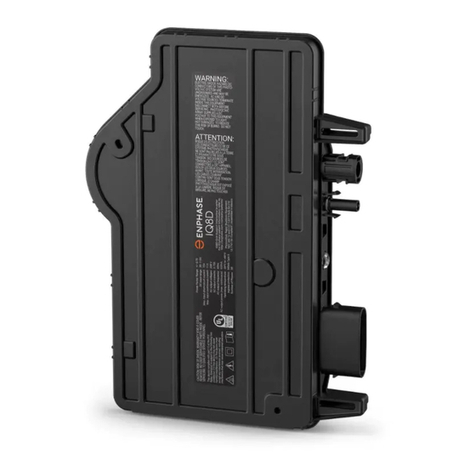
enphase
enphase IQ8D-72-E-US User manual

enphase
enphase M175-24-240-S User manual
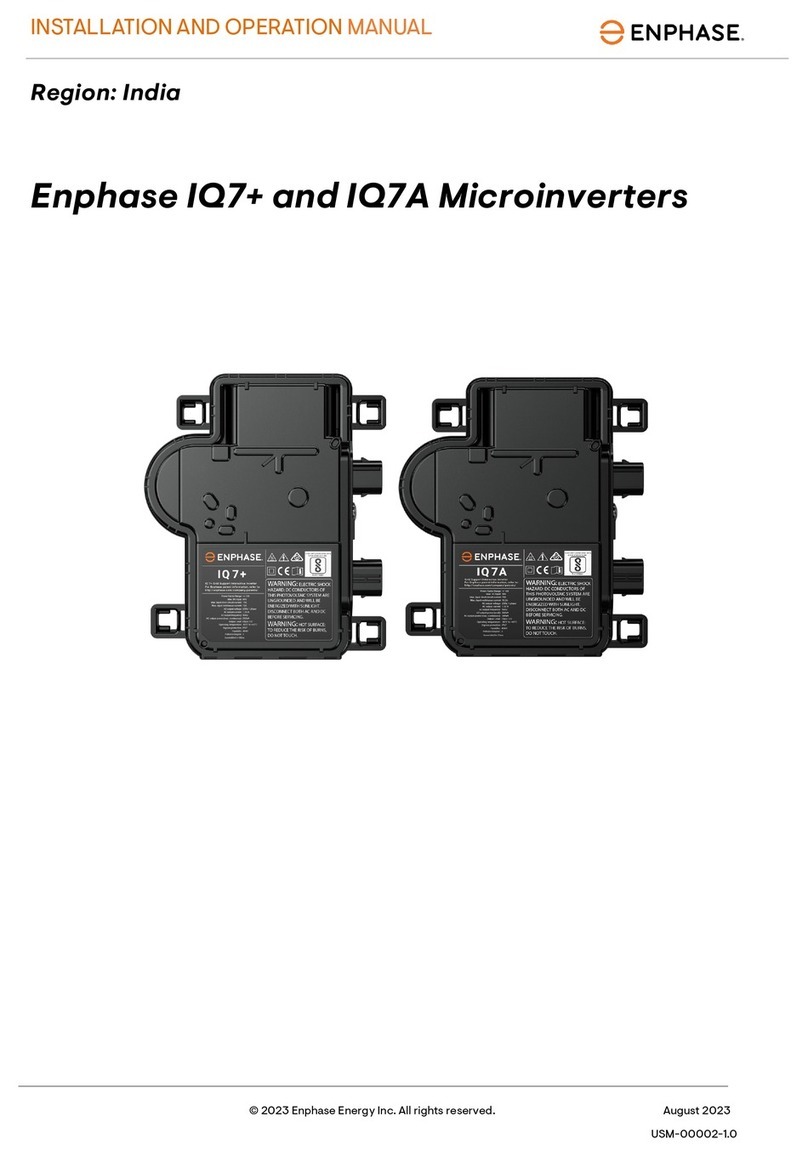
enphase
enphase IQ 7+ User manual
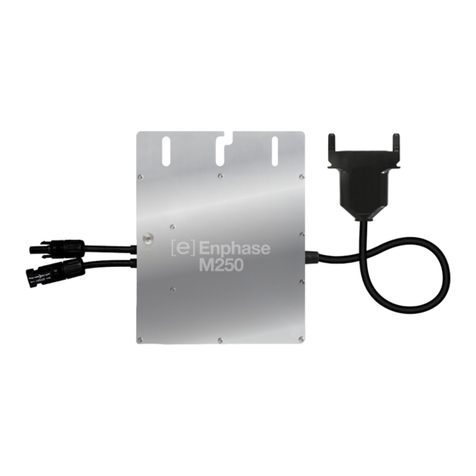
enphase
enphase M250 User manual
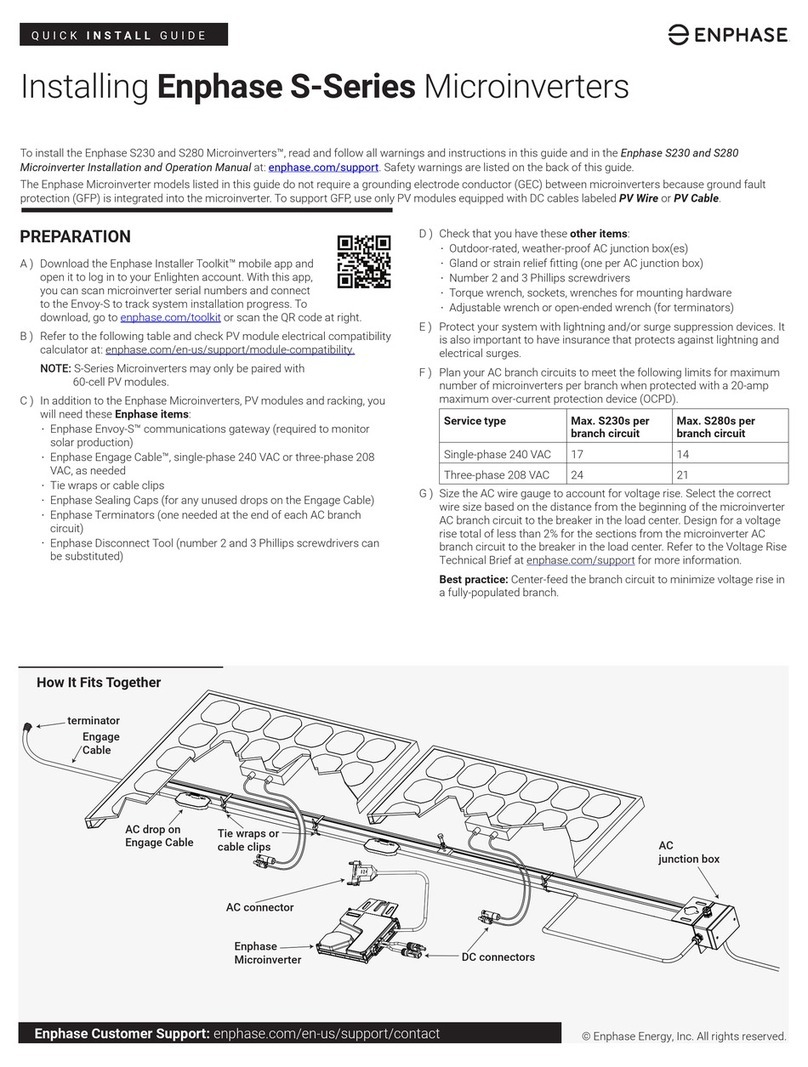
enphase
enphase S280 User manual

enphase
enphase IQ Combiner 3 User manual

enphase
enphase IQ8X User manual

enphase
enphase IQ 7 User manual

enphase
enphase IQ 7+ User manual

enphase
enphase IQ8D-72-E-US Guide
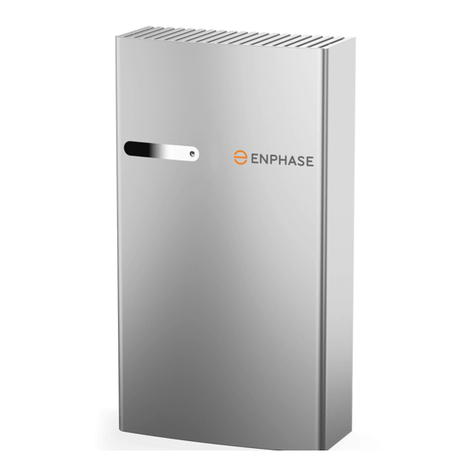
enphase
enphase IQ Battery 3T User manual
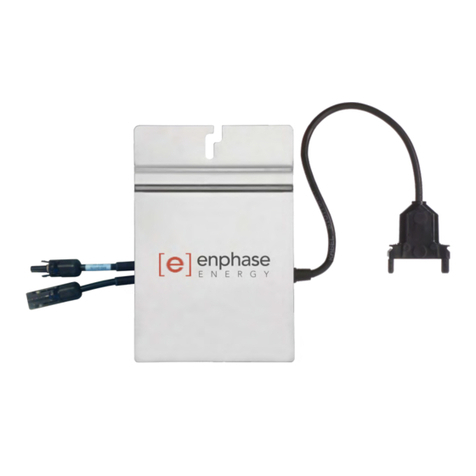
enphase
enphase M215 User manual
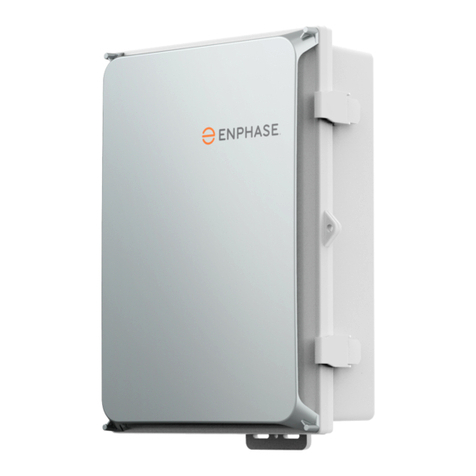
enphase
enphase IQ Combiner 4 User manual

enphase
enphase M250 User manual
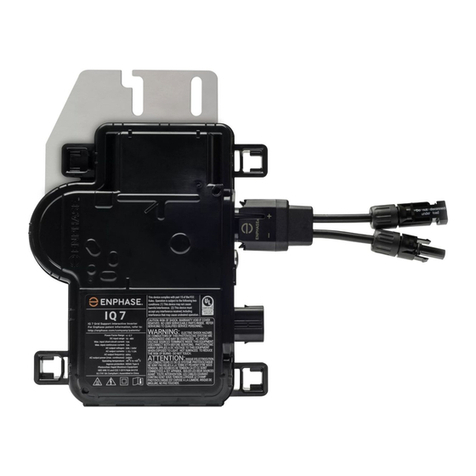
enphase
enphase IQ 7 Micro User manual
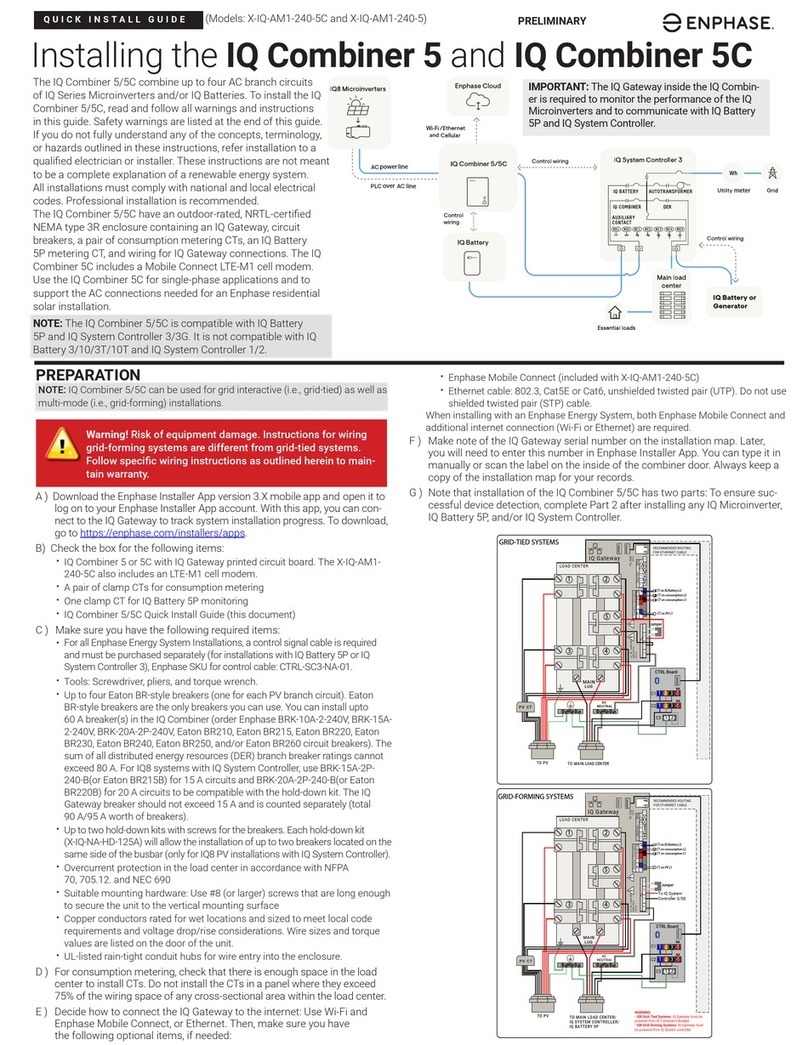
enphase
enphase IQ Combiner 5 Instruction Manual
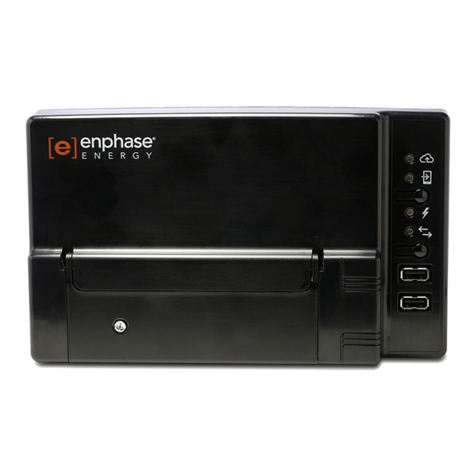
enphase
enphase ENV-S-WM230 User manual

enphase
enphase C250 User manual
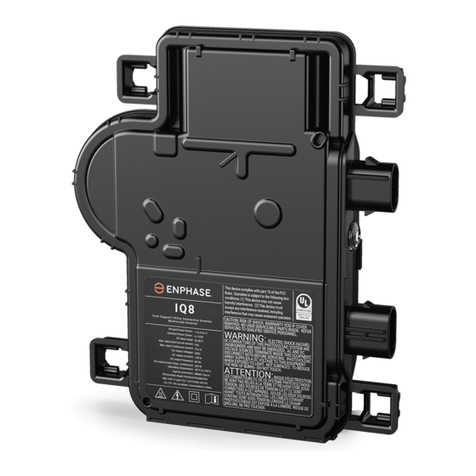
enphase
enphase IQ8 User manual
